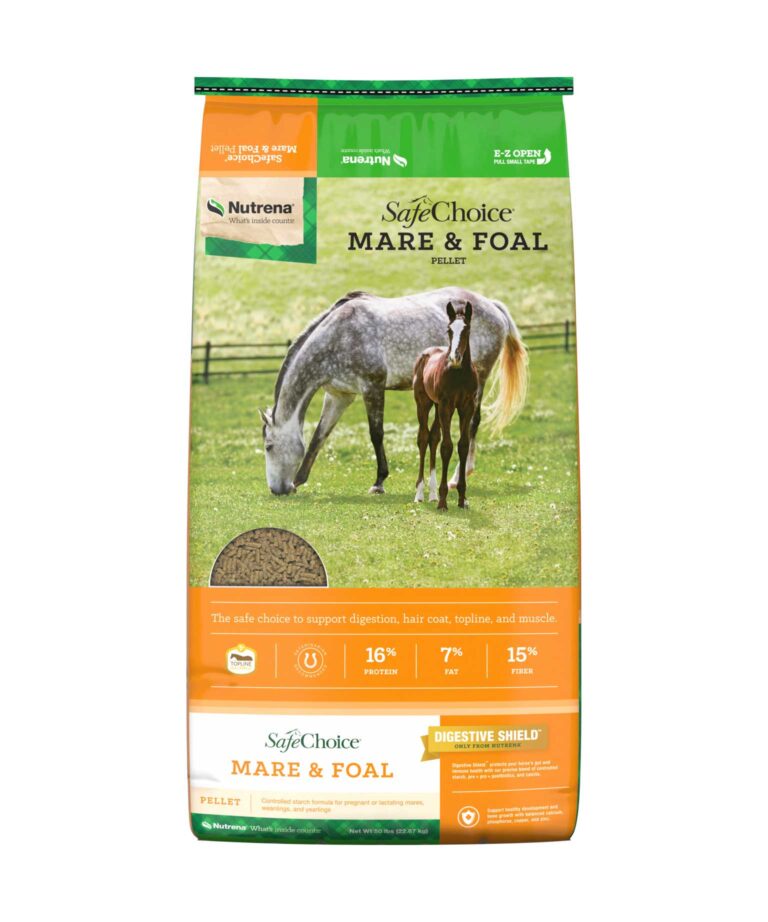Will Too Much Protein Cause Developmental Disorders in my Growing Horse?

Protein is a very important part of every horse’s diet. Horses of all ages, developmental stages, activity levels, and reproductive status have essential amino acid requirements, amino acids being the building blocks of protein, and are what determine the quality of the protein.
Here’s an analogy: consider amino acids as letters of the alphabet, and protein as words with structures such as muscle being the complete sentence. Now put it all together; the combination of amino acids (letters) determines the quality or type of protein (word) that is formed. The body is made up of many different types of proteins, all with distinct amino acid profiles. If you have a shortage of or imbalance of the essential amino acids, the body cannot spell the words and complete the sentences, so the body can’t build and maintain quality tissues.
Consider this example:
- 94% of a hoof is made up of amino acids (methionine for example)
- The remaining 6% is comprised of fats, minerals and vitamins (biotin being just one of those vitamins)
- Having protein or amino acid deficiency in the diet or feeding an unbalanced ration will compromise hoof integrity (brittle, soft, cracks, susceptibility to thrush, etc.).
Now for the question above: Will protein cause developmental joint disease in my growing horse?
Growing horses have high nutrient requirements, with quality digestible protein (amino acids) being a very important and significant part of that nutrient requirement.
Confusion often occurs between providing nutrients and calories. Providing a grain concentrate that is balanced for adult horses may provide too many calories (energy) and not enough of the nutrients (amino acids, minerals, fatty acids, vitamins ) the growing animal requires, for a couple reasons:
- Because unlike mature adult horses, youngsters cannot eat as much per meal (small stomach) and may never consume the recommended daily intake
- Because their hind-gut is immature (can’t digest/ferment forages very well) so they are unable to digest and absorb as many of the nutrients from forage as an adult horse does, leaving a nutrient gap in the total diet
The result is a mismatched calorie to nutrient ratio, with too many calories and not enough of the nutrients (amino acids, minerals, fatty acids, vitamins) that they need to grow and develop properly. High calories without the right amount and type of nutrients to support the rapidly growing animal can be problematic. Resulting issues are often experienced as hay bellies, physitis, developmental joint disease (e.g. OCD), contracted tendons, etc.
Providing a diet balancer or a concentrate specifically designed to support growing horses is a great way to avoid the calorie to nutrient mismatch as well as provide digestible sources of those nutrients. Diet balancers tend to be very dense in their protein, vitamins and mineral content, and very low in calories themselves. This is why crude protein, for example, seems very high (e.g. CP 30%) in ration balancers and can cause concern among horse owners. Fear not, feeding rates for these concentrated products are much lower than a traditional grain formula, providing all of the balanced nutrients needed in a volume that a small stomach can handle, without all of the extra energy.
Having too much poor quality protein in the diet will not be utilized by your horse, and may result in an amino acid deficiency, and makes for an ammonia filled barn due to excess nitrogen being excreted in the urine. Having the right amount and combination of amino acids in the diet is key to supporting optimal growth and reducing metabolic waste.
Working with an equine nutritionist to find a horse feed that is specifically designed for growth and development and then following the manufacturer’s feeding directions should result in a practical and effective solution to ensure your youngster is getting the right balance of energy and nutrients, helping to avoid developmental issues and maximizing performance.




